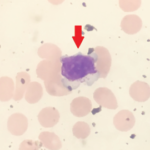NEW YORK (Reuters Health)—Bone mineral density (BMD), particularly lumbar BMD, may not reliably indicate the presence of asymptomatic vertebral fragility fractures in post-menopausal women, new findings suggest.
In a study online May 9 in Bone, Italian researchers found such fractures were common among women seen at an osteoporosis clinic, yet the vast majority had not previously been diagnosed.1
“Improvement of the current recommendations for spinal X-ray examination may therefore lead to an early identification and better management of patients with vertebral fractures, especially in younger age groups,” Caterina Trevisan, MD, of the University of Padova and colleagues write.
The authors note vertebral fractures, particularly multiple ones, harm patients’ self-sufficiency and increase morbidity and mortality. They are also associated with a higher risk of suffering new ones, Dr. Trevisan tells Reuters Health by email.
The team examined records of 1,132 post-menopausal women (mean age: 64 years) who were seen at a single outpatient osteoporosis clinic and were not taking anti-osteoporotic drugs.
All participants underwent dual-energy X-ray absorptiometry (DXA) to assess BMD and T-scores for the lumbar spine (L1-L4) and total femur. Vertebral fractures were diagnosed based on reduction of at least 20% of vertebral height seen in lateral radiography of the thoracic and lumbar regions.
The overall prevalence of vertebral fractures was 28.2%; the prevalences by age group ranged from 15.5% in women under 60 to 44.1% in those 71 and older (P<0.0001). Nearly 83% of the fractures had not been diagnosed before.
Only age and femoral BMD were significantly associated with known or unknown vertebral fractures.
When the researchers looked at BMD values in patients according to the presence of no (n=813), one (n=208) or two or more vertebral fractures (n=111), they found no significant difference in lumbar BMDs between groups.
Under either current Italian guidelines or International Society of Clinical Densitometry recommendations, the authors note a substantial numbers of patients, especially those younger than 60, would not normally have received spinal X-rays.
“There is currently inconsistency in whether and how professional guidelines about vertebral imaging are followed,” Anne Schafer, MD, associate professor of medicine and of epidemiology and biostatistics at the University of California San Francisco, tells Reuters Health by email.
The new findings “will help inform the conversation, as professional organizations and individual clinicians decide which guidelines to issue and follow,” says Dr. Schafer, who was not involved in the study.
Kristine E. Ensrud, MD, MPH, professor of medicine and epidemiology and community health at the University of Minnesota in Minneapolis, says most vertebral fractures, typically milder ones, don’t come to medical attention when they occur and are identified later on the basis of X-rays alone.

